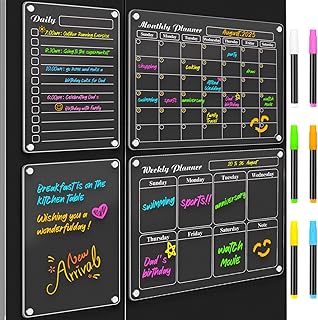Why I wrote this is simple. Parenting keeps surprising me. Some days run smooth and calm. Other days throw a curve and test your patience. I want to offer steps that fit real life, not a perfect plan. This post covers 23 challenges you might not see coming and easy ways to handle them.
Who it’s for If you juggle work, meals, school runs, and little worries, this is for you. If you care about your kids and your own sanity, you belong here. Whether you have a baby, a toddler, a kid in elementary school, or a teen, these ideas pace with your day. You will find tips that feel doable.
1. The Sudden Shift to Independence

Here is why the shift to independence matters. They want to do things on their own. You can guide them while staying close.
– Let them pick tasks they want to own, like choosing outfits or planning a snack.
– Make a routine chart on the fridge. Check off steps as they finish.
– Praise the wins to grow confidence, like tying shoes or packing a bag.
Next steps: If they feel stuck, ask clear questions and offer options. When they feel overwhelmed, step in gently with calm choices.
1. The Sudden Shift to Independence
Editor’s Choice

Routine Stickers Chore Stickers for Kids Chore Chart Routine Chart Rewar…
 Amazon$7.19
Amazon$7.19
I Can Do Hard Things: Mindful Affirmations for Kids
 Amazon$12.95
Amazon$12.952. Navigating Emotional Outbursts

A tantrum comes on fast. You can guide your child with calm.
Here is why it helps: big feelings flare up before words fit. You break the moment with steady choices.
– Stay calm and breathe with them. Speak softly and pause before you react.
– Name the feeling. Say, “You’re feeling angry,” then offer a hug if they want one.
– Give them a tool to express. Try a simple feelings chart or quick drawing.
– After the surge, talk in plain words. Ask, “What helped you calm down?” Use a toy or story to show coping.
Next steps: keep practicing every day.
2. Navigating Emotional Outbursts
Editor’s Choice

Feelings Chart for Kids – Coping Skills Emotions Chart Poster – Calm Dow…
 Amazon$16.95
Amazon$16.95
The Calm Ball – Therapist-Designed Coping Skills Magic 8 Ball with 20 Ca…
 Amazon$24.95
Amazon$24.95
The Color Monster: A Story About Emotions (The Color Monster, 1)
 Amazon$13.47
Amazon$13.473. The Jealousy Game

Sibling jealousy can pop up fast. One moment they share a toy; the next, they glare. A new baby can make this even tougher. Here is why you should act. Let’s break it down with steps you can use.
– Create a weekly ‘special time’ for each child. No phones, just you. A short walk, a game, or reading together.
– Set up teamwork projects. A simple puzzle, garden task, or group chore that needs both kids.
– Praise good moments and name feelings. If you see kindness, say it. If you see hurt, reassure them of your love.
Next steps: Try these this week and notice the tone shift.
3. The Jealousy Game
Editor’s Choice

Sorry! Kids Board Game, Family Board Games for Kids and Adults, 2 to 4 P…
 Amazon$7.99
Amazon$7.99
NASHRIO Wooden Puzzles for Toddlers 2-5 Years Old(Set of 6), 9 Pieces Pr…
 Amazon$6.99
Amazon$6.99
How to Catch a Monster: A Halloween Picture Book for Kids About Conqueri…
 Amazon$6.38
Amazon$6.384. Dealing with School Stress

If school feels heavy, you are not alone. You can make this lighter by talking openly with your child and keeping a steady routine.
– Create a calm, tidy homework space with soft light.
– Break big tasks into small steps; use a simple to-do list.
– Use a calendar for all assignments and tests.
– Have regular check-ins to hear how they feel and what’s hard.
– Teach quick relaxation ideas like slow breathing or short walks.
Keep the routine steady and adjust as they grow.
Next steps: remind them it’s OK to ask for help from you or teachers, and celebrate small wins together.
4. Dealing with School Stress
Editor’s Choice

5 Tier Rolling Utility Cart Multi-Functional Movable Storage Book Shelve…
 Amazon$33.68
Amazon$33.68
Blueline 2022, Blueline Undated Task Planner, Duvet Laminated Cover, Bla…
 Amazon$15.98
Amazon$15.98
Breath as Prayer: Calm Your Anxiety, Focus Your Mind, and Renew Your Sou…
 Amazon$10.99
Amazon$10.995. The Challenge of Healthy Eating

Your child often fights about vegetables. One night broccoli feels like a winner, the next it is a no. You want healthy meals without fuss. This plan supports healthy eating without a fight. Here is a plan you can try.
– Make meals fun by letting your kid pick colors, shapes, and even names for dishes.
– Build plates and use dips to make veggies appealing.
– Be patient; tastes change, and progress can be slow.
Next steps:
– Try theme nights for meals.
– Offer options instead of demands.
– Praise brave bites, no matter how small.
Stay calm at table and celebrate wins.
5. The Challenge of Healthy Eating
Editor’s Choice

Vegetable Cutter Shapes Set (8 Pack) – 1.5″ Stainless Steel Mini Cookie …
 Amazon$7.99
Amazon$7.99
6×1.6 oz Salad Dressing Container to Go, Leakproof Reusable Stainless St…
 Amazon$7.99
Amazon$7.99
Certified International Coastal Landscape 11″ Dinner Plates, Multicolor,…
 Amazon$43.97
Amazon$43.976. The Fight Against Bullying

Bullying hurts your child and you feel it too. Here is how you handle it with care and clarity.
– Listen fully to what your child shares. Keep your voice calm and avoid blame.
– Reassure them that you will act and that you both deserve safe school days.
– Help them spot safe adults at school and plan who to talk to first.
– Practice short, assertive phrases they can use in trouble or shock.
– Check in regularly about friends, class changes, and online risk.
Next steps: set a meeting with the teacher, document incidents, and track progress. You guide the way today.
6. The Fight Against Bullying
Editor’s Choice

Handling Bullying and Overcoming: Practical Coloring Guide to Stop Bully…
 Amazon$12.88
Amazon$12.88
7. The Challenge of Time Management

Here is why time slips away when your kids juggle school and clubs. You can help them stay on top of tasks with simple tools. Start with a shared calendar they can see on a wall or phone. Use a planner or a digital to-do list. Next, build a weekly plan that includes study time and a break.
– Set deadlines by day.
– Do short study sprints with a break.
– Add a family meal or rest time.
Review often and tweak. Next steps: try this for two weeks and note shifts.
7. The Challenge of Time Management
Editor’s Choice

Aesthetic 2025-2026 Wall Calendar – Runs from June 2025 Until December 2…
 Amazon$6.99
Amazon$6.99

To Do List Notepad – To Do List Notebook for Work with 52 Sheets, Undate…
 Amazon$5.49
Amazon$5.498. The Tricky Terrain of Friendships

Your child’s friendships can shift in a flash. One week they are close, the next it’s all drama. You can help them ride this wave. Start with simple talk about feelings. Ask what happened and how it felt. Then role-play a tricky moment to practice calm, honest words. Try lines like, “I feel left out. Can we fix this?” Remind them that friendships change, and that’s normal. Key steps:
– Define what makes a good friend
– Rehearse conflict moves
– Seek new friendships with different groups
Stay steady, kind, and real. This approach builds trust and practical skills for life.
Friendships are like waves – they ebb and flow. Teach your child to navigate the tides with open communication and practice. Remember, it’s perfectly normal for friendships to change!
8. The Tricky Terrain of Friendships
Editor’s Choice

Emotions Flashcards, 50 Different Feelings with Coping Skills-Learn to I…
 Amazon$11.99
Amazon$11.99
Social Skills Role Play Cards: Facial Expressions & Body Language
 AmazonCheck Price
AmazonCheck Price
9. Coping with Parenting Guilt

Facing parenting guilt is common when you juggle work, kids, and life. You may feel you are not enough. Here is a clear way to handle it.
– Acknowledge your effort. You are doing your best, and that matters.
– Talk with someone you trust. Share what hurts. A friend can feel familiar.
– Keep small wins. Quality time beats long, empty hours.
– Set real goals. Check what you want for your family and adjust.
– Practice self-care. A short walk or a warm cup of tea can reset you.
– Do a quick check-in. Jot one line about what went well today.
Next steps: keep notes, be kind to yourself, and seek support when you need it.
9. Coping with Parenting Guilt
Editor’s Choice

Lined Journal Notebook for Women Men,256 Pages A5 Hardcover Leather Jour…
 Amazon$9.99
Amazon$9.99
Self-Love Workbook for Women: Release Self-Doubt, Build Self-Compassion,…
 Amazon$8.88
Amazon$8.88
10. The Challenge of Sleep

Here is why sleep matters. A steady routine helps your child rest better. Start with a consistent bedtime. Add calm steps: a warm bath, a short story, soft music. These cues tell the body it is time to sleep. Be patient as they learn. Consistency beats speed.
– Calm sleep space: dim lights, comfy bed, quiet sounds.
– Reward chart: small marks for staying in bed.
– Limit screens: no screens for an hour before bed.
If sleep problems persist, talk with a pediatrician to check for hidden causes. Next steps: keep the routine simple and track what changes sleep.
10. The Challenge of Sleep
Editor’s Choice

Magicteam White Noise Machine with 20 Non Looping Natural Soothing Sound…
 Amazon$21.99
Amazon$21.99
Behavior Reward Chart System – Pad with 26 Chore Charts for Kids, 2800 S…
 Amazon$12.99
Amazon$12.99
L LOHAS LED Night Light Plug in, Modern Night Lights Plug into Wall, Dus…
 Amazon$13.47
Amazon$13.4711. The Dreaded Homework Battles

Homework battles drain evenings. You want your child to learn, not fight.
– Set up a calm space
A quiet desk with good light helps focus. Keep pencils, papers, and markers in easy reach.
– Break tasks into small steps
One math page or a short reading chunk today. Use a simple checklist.
– Build a simple routine
Choose a consistent start time each day. Rely on the same steps to start.
– Use a timer
Work in 15 minute bursts, then stretch. Show the timer so they see progress.
– Make it a family moment
Sit together, share a snack, or listen to soft music. Celebrate tiny wins with a quick cheer.
These steps turn homework into a calmer routine. Give it a try tonight.
11. The Dreaded Homework Battles
Editor’s Choice

Marbrasse Desk organizer with Drawer, 4-Tier Mesh File Organizer with 5 …
 Amazon$26.99
Amazon$26.99
TIME TIMER Home MOD – 60 Minute Kids Visual Timer Home Edition – for Hom…
 Amazon$17.06
Amazon$17.06
To Do List Notepad 3 Pack, Undated Daily Planner Notepad With To Do List…
 Amazon$13.99
Amazon$13.9912. Understanding Mental Health

– Here is why this matters: Understanding mental health begins at home. You notice changes in your child’s mood. You can act calmly and with care.
– Start open talks about feelings. Ask simple questions. Let them name what hurts or excites them.
– Teach easy coping tools. Try journaling, short breathing, or a quick walk after school.
– Spot signs. Worries, sleep changes, pullbacks from friends, or sadness need your attention.
– Keep resources ready. List trusted apps, a school counselor, a doctor, or a therapist you both feel okay with.
– Grow healthy ties. Plan regular family time and safe social moments.
– Start today.
12. Understanding Mental Health
Editor’s Choice

One Question a Day Journal for Kids: 365 Days All about Me
 Amazon$6.80
Amazon$6.80
ORB Curiosities Jumbo Expand-A-Ball – More Than Doubles in Size from 6″ …
 Amazon$9.99
Amazon$9.99
Sorry! Kids Board Game, Family Board Games for Kids and Adults, 2 to 4 P…
 Amazon$7.99
Amazon$7.9913. Finding Your Parenting Style

Finding your parenting style can feel clear at first, then slip away as life changes. You’ll succeed by staying flexible. You and your child grow together, so your plan should shift too. Here is why.
– Explore different styles by reading short, plain books.
– Talk with other parents about what they try and what sticks.
– Test ideas in small steps. If something fails, tweak it.
Next steps: keep a simple log. Note what helps your child calm down, what boosts cooperation, and what drains you. You’ll find a balance that fits you and your family.
Stay curious and patient each day.
13. Finding Your Parenting Style
Editor’s Choice

The Whole-Brain Child: 12 Revolutionary Strategies to Nurture Your Child…
 Amazon$10.84
Amazon$10.84
The A-Z of Therapeutic Parenting Strategies and Solutions Therapeutic Pa…
 AmazonCheck Price
AmazonCheck Price
The Five Love Languages: The Secret to Love That Lasts
 Amazon$0.00
Amazon$0.0014. The Holiday Hustle

The holidays with kids can feel crowded. A simple plan keeps you steady. Here is how.
– Calendar Create a simple holiday calendar. List big events, who will join, and when.
– Downtime Build downtime into your day between events. Sit with hot cocoa, take a short walk, or read a story.
– Experiences Focus on moments, not gifts. Bake cookies, sing carols, drive to see lights, start a new family tradition.
Next steps: Share the plan with your kids. Say no when the schedule is full, then adjust. You deserve calm, joyful holidays.
14. The Holiday Hustle
Editor’s Choice

Global Printed Products Weekly Family Planner – 52 Undated Weeks for Pla…
 Amazon$18.49
Amazon$18.49
Gourmet Hot Chocolate Gift Set, Flavors Include Salted Caramel, Peppermi…
 Amazon$19.99
Amazon$19.99
The Unplugged Family Activity Book: 60+ Simple Crafts and Recipes for Ye…
 Amazon$11.97
Amazon$11.9715. Learning to Let Go

Letting go comes with every big step. Your child heads to school, then college, and you feel proud and a bit sad. You want to stay close while you give space to grow.
Here is how to handle it in real life:
– Create a goodbye ritual. A simple routine like a hug, a note, and breakfast signals this change and keeps bonds clear.
– Share your own growth stories. Tell them about a time you learned to stretch, and what helped you stay brave.
– Keep communication open. Check in often, listen first, and celebrate tiny wins.
Your bond stays strong. Always.
Letting go is tough, but it’s in those moments of pride and sadness that your child truly begins to grow. Create a goodbye ritual to celebrate each step and share your own stories to inspire bravery.
15. Learning to Let Go
Editor’s Choice

Grandma’s Story: A Memory and Keepsake Journal for My Family (Heirloom S…
 Amazon$13.43
Amazon$13.43
Sorry! Kids Board Game, Family Board Games for Kids and Adults, 2 to 4 P…
 Amazon$7.99
Amazon$7.99
Skylety Coworker Leaving Gifts for Women Going Away Christmas Farewell G…
 Amazon$16.99
Amazon$16.9916. The Pressure of Extracurriculars

– If your child feels pressure from many extracurricular activities, you are not alone.
– Let them choose the ones that truly spark joy, not the ones that look good on paper.
– Quality matters more than how many clubs they join.
– If they feel overwhelmed, sit down with them, sip some water, and trim the schedule.
– Keep time for rest, meals, and family to rebuild energy.
– Check in with simple questions about happiness, energy, and stress.
– Here is why a steady pace helps learning, mood, and focus.
– Next steps: schedule a weekly review to adjust plans.
– This way your child stays glad, not drained.
– You can start this week.
16. The Pressure of Extracurriculars
Editor’s Choice

Global Printed Products Weekly Family Planner – 52 Undated Weeks for Pla…
 Amazon$18.49
Amazon$18.49
The Mindfulness Journal for Kids: Guided Writing Prompts to Help You Sta…
 Amazon$7.54
Amazon$7.54
Stress Balls (5 Pack) for Kids and Adults – Stress Relief Balls with Mot…
 Amazon$8.99
Amazon$8.9917. The Challenge of Identity

If your child asks, “Who am I?” you’re not alone. Identity questions show up in pre-teens and teens. You can help them grow with steps.
– Start honest chats. Ask what makes them feel like themselves and listen closely.
– Encourage exploration. Support hobbies, clubs, and friends.
– Validate feelings. Name their emotions and remind them that growing up means trying new roles.
– Share varied role models. Read books or watch videos that show different paths to self.
– Talk values. Discuss kindness, courage, and respect.
– Back their ideas. Help a project or event they care about.
Identity takes time. You guide, they decide.
17. The Challenge of Identity
Editor’s Choice

The Self-Discovery Journal: 52 Weeks of Reflection, Inspiration, and Gro…
 Amazon$9.76
Amazon$9.76

MEROCO Feelings Emotions Cards for Kids Therapy, Realistic Picture Cards…
 Amazon$9.99
Amazon$9.9918. The Surprise of Parenting Styles Within a Couple

You may feel surprised when you and your partner handle parenting in different ways. A small disagreement can flare into a big argument.
These differences come from your upbringing, late nights at work, and how you read risks. You both want the same thing: your child’s safety and happiness.
Here is why blending styles matters. A shared plan gives your child steady rules and keeps you from fighting in front of them.
– Set regular family meetings to discuss parenting decisions.
– Attend parenting workshops together to learn new skills.
– Be respectful of each other’s views, even when you disagree.
It works.
When parenting styles clash, remember: you’re both aiming for the same goal. Regular family meetings can turn disagreements into harmony, giving your child the stability they need to thrive.
18. The Surprise of Parenting Styles Within a C…
Editor’s Choice

Christian Family Meeting Planner: Intentional Planning for Christian Fam…
 Amazon$13.99
Amazon$13.99

19. The Challenge of Open Communication

If you feel your child holds back words, you want a real plan. Open talk helps them feel heard and safe. Here is how to start.
– Family talking times: Set short, regular moments for chat, free from screens and noise.
– Open-ended questions: Ask questions that need more than yes or no, like “What made today feel easy or hard for you?”
– Calm, inviting tone: Keep the space relaxed, smile, listen, and model sharing your own thoughts so they see it’s okay to speak up.
Next steps: pick one tip now, try it for a week, and adjust as needed.
19. The Challenge of Open Communication
Editor’s Choice

DIYMAG Planning Pads 4Pack Acrylic Magnetic Dry Erase Calendar for Fridg…
 Amazon$24.98
Amazon$24.98
Tell Me More: A Conversation Starter Game of Questions to Deepen Connection
 Amazon$16.95
Amazon$16.95
20. The School Transition

Here is why your child may feel unsure about moving to a new grade. The school transition can bring nerves, new faces, and a new routine. You can help by talking about what to expect and letting them tie the plan to actions.
– Visit the new building together. See the classroom and hallways.
– Meet teachers and the principal so they hear friendly voices.
– Set up playdates with future classmates to ease social nerves.
– Make a simple “new school” checklist you both use.
Share your own school stories. Reassure them that nerves are normal and you are with them every step.
20. The School Transition
Editor’s Choice

21. The Unexpected Cost of Parenting

Parenting costs can hit you when you least expect them. Child care, school fees, and activities rise. The extra price tag strains budget and plans. You want safety for your family and small joys that fit money goals.
Use this plan to manage the extra costs without losing joy.
– Set a budget Track your musts like rent and food; plan small treats.
– Review monthly Check costs and adjust as you need.
– Find cheap joys Have a game night at home.
– DIY and thrift Repair, swap gear, reuse what you have.
– Teach saving Show your piggy bank growing.
– Saving and investing Explain basics with clear examples.
Small steps add up. Your family stays safe and learns good habits.
Unexpected parenting challenges can stretch your budget, but joy doesn’t have to break the bank. Embrace small treats and simple joys – they often create the best family memories!
21. The Unexpected Cost of Parenting
Editor’s Choice

Budget Planner – Monthly Budget Book with Expense Tracker Notebook, Unda…
 Amazon$9.49
Amazon$9.49
Sorry! Kids Board Game, Family Board Games for Kids and Adults, 2 to 4 P…
 Amazon$7.99
Amazon$7.9922. The Challenge of Self-Care

Self-care for parents often slips when you chase kids all day. You feel tired and spread thin. If you guard a little time for you, you stay steady for your family.
Here is why it helps: a rested you makes better choices, stays calmer, and can listen better.
– Schedule regular me-time on the family calendar.
– Choose quick resets: a 10-minute walk or a page in a book.
– Make self-care a family habit by letting kids pick a simple after-dinner activity.
– Next steps keep 10 minutes daily and plan one small weekly break.
Start small and grow from there.
22. The Challenge of Self-Care
Editor’s Choice

Retrospec Sedona Zafu Meditation Cushion With Buckwheat Hull Fill – Adju…
 Amazon$26.99
Amazon$26.99
Stress Relief: Coloring Book for Adults and Kids, Bold and Easy, Simple …
 Amazon$9.99
Amazon$9.9923. Embracing Imperfection

Many parents feel the pull to be perfect. You don’t have to carry that load alone. Here is why embracing imperfection helps your family grow.
– Start with self-compassion. Speak kindly to yourself when a mess happens. You’re allowed to pause, breathe, and reset.
– Next, share a real moment with your child. A small mistake can become a lesson, not a failure.
– Create a ‘failure wall’ in your kitchen or fridge. Post tiny wins and the lessons they taught.
– Encourage a growth mindset by saying, ‘What did we learn today?’
You’ll both grow. Let laughter fill the room after a spill.
23. Embracing Imperfection
Editor’s Choice

The Mindful Self-Compassion Workbook: A Proven Way to Accept Yourself, B…
 Amazon$16.03
Amazon$16.03
UHillMinerva Growth Mindset Affirmation Cards, 52 Watercolor Illustrated…
 Amazon$14.99
Amazon$14.99
MaxGear Large Cork Board for Wall 36″ x 24″, Black Bulletin Board, 6 Pac…
 Amazon$19.99
Amazon$19.99Conclusion

Parenting is a journey filled with unexpected challenges and beautiful moments of growth. Each obstacle you face helps shape both you and your child into stronger individuals.
Embrace the imperfections, celebrate the small victories, and remember that you’re not alone on this journey. By learning to navigate these challenges together, you’ll foster a loving and resilient family bond that can weather any storm.
Note: We aim to provide accurate product links, but some may occasionally expire or become unavailable. If this happens, please search directly on Amazon for the product or a suitable alternative.
This post contains Amazon affiliate links, meaning I may earn a small commission if you purchase through my links, at no extra cost to you.
Frequently Asked Questions
What are some common parenting challenges I might not expect?
Parenting is full of surprises! You may encounter challenges like navigating emotional outbursts, dealing with sibling jealousy, or managing screen time limits. These situations can catch you off guard but are normal parts of the parenting journey.
Each challenge provides an opportunity to grow and learn alongside your child, making the experience more enriching.
How can I effectively manage my child’s screen time?
Managing screen time can be tricky, but setting clear hours is a great start! Pick fixed start and end times for screen usage, and keep the rules simple so your child knows when screens are off-limits.
Engage in activities together that don’t involve screens, creating a balanced routine that fosters both connection and healthy habits.
What should I do if my child is experiencing school stress?
If your child is feeling overwhelmed by school, you’re not alone! Open communication is key. Create a calm, tidy homework space and maintain a steady routine. Regularly check in with your child about their feelings and encourage them to express any worries they might have.
By being supportive and understanding, you can help them navigate these tough times.
How can I help my child with emotional outbursts?
Emotional outbursts can happen quickly, but there are ways to manage them calmly. Start by remaining composed yourself; big feelings often arise before children have the words to express them. Offer steady choices and validate their feelings while guiding them through the moment.
This approach not only helps in the moment but also teaches your child how to handle their emotions in the future.
Is it normal to feel parenting guilt, and how can I cope with it?
Absolutely, parenting guilt is a common feeling! Many parents juggle work, kids, and life, leading to the sense that they are not doing enough. The key is to acknowledge your efforts and remember that no parent is perfect.
Practice self-compassion and remind yourself that you are doing your best. Taking time for self-care can also help you recharge and be present for your family.
